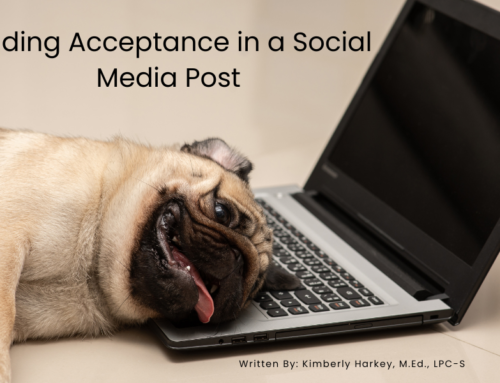Why AI Will Never Replace Real Therapists (And Why We Shouldn’t Want It To)
From a therapist who’s lived through the loneliness epidemic, late-stage capitalism, and at least three rounds of Silicon Valley trying to “disrupt” human connection
By: Jessica Eiseman, MS, LPC-S, NCC
Let me be clear: AI is not going to take over therapy. Not real therapy.
That’s not because AI can’t learn to ask the right questions or mirror therapeutic language. It can—and it does. I’ve played around with it myself. It can even offer some insight, structure a CBT worksheet, suggest journaling prompts, or remind you to breathe. And in some moments, that can be helpful, especially for us neurodivergent folks who need help organizing their thoughts.
But let’s not confuse helpful with healing.
Healing happens in the presence of a regulated, attuned human. One who sees you, who holds your story, who remembers the trauma you didn’t finish telling last week—and who notices your shoulders hunch just a little when you start again. Therapy is a relationship. A real one. One that unfolds, builds trust, and meets you where you are—not where your algorithmic profile thinks you should be.
We got here—this point in history, where people are lonelier, more anxious, more hopeless, and more disconnected—not because we had too much human connection, but because we slowly started replacing it. Replacing relationships with transactions. Community with convenience. Human presence with productivity. We now have a society where people text more than talk, work more than rest, and scroll through curated feeds instead of looking someone in the eye and saying, “I’m not okay.”
And this detachment doesn’t just make us lonely—it makes us afraid. Afraid of one another. The more time we spend online, siloed into our corners, arguing with strangers from behind keyboards, the less we actually know people. When we don’t interact face-to-face—when we don’t sit next to someone, hear their voice, share space—we stop seeing them as human. They become “other.” But when we do connect, even in small ways, fear tends to fade. Because it’s hard to hate someone when you’ve shared a laugh with them. Or cried in the same room.
And now, venture capitalists and “mental health tech” startups think the next frontier is replacing therapists too?
Let me tell you something: the moment therapy becomes fully digitized—fully AI-ified—we haven’t “solved” the mental health crisis. We’ve just conceded to it. Therapy doesn’t work because of the tools. It works because of the relationship between the client and the therapist.
If you’ve seen the movie The Wild Robot, you know what I’m getting at. It’s a children’s story, sure, but one that cuts deep. In it, a robot designed to follow code and survive ends up caring for a gosling and learning to feel. Over time, Roz develops not just empathy but agency—a kind of emergent humanness through connection and care. It’s a beautiful story, but also a cautionary one. You can program a robot to do a lot of things. But even in the world of fiction, real growth required real relationships.
VC firms may dream of scalable, low-cost, 24/7 mental health “solutions.” But a truly ethical therapist dreams of something else: for people to feel seen, heard, and cared for by someone who is actually there.
Because healing doesn’t come from perfectly generated responses—it comes from the presence of someone who knows when to speak, and when to simply stay with you in the silence.
What we need in this mental health crisis isn’t another app—it’s connection. And no algorithm can offer the kind of connection that comes from a real human showing up for you, week after week.
Let AI be a tool in therapy if needed. But don’t let it pretend to be the therapist.
We’re not just minds that need rewiring.
We’re humans that need relating.
And that’s something no code can replace.




